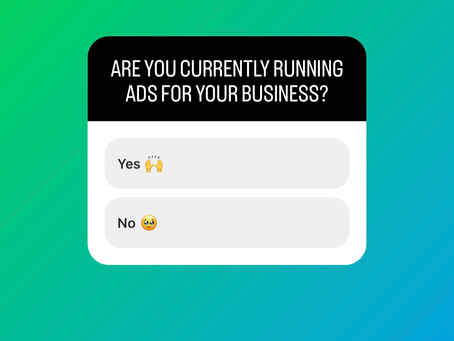In the bustling world of social media, brevity is key. As attention spans dwindle, micro-content has risen to prominence, providing digital marketing agencies with a potent tool to captivate audiences and boost engagement. This blog post delves into the art of crafting micro-content, showcasing real-life examples of how it can elevate marketing efforts and forge a lasting connection with consumers on various social media platforms.
Defining Micro-Content
Micro-content is bite-sized, easily digestible pieces of information designed to capture attention and convey a message swiftly. Twitter’s 280-character limit, for instance, epitomizes the essence of micro-content, pushing brands to be concise and impactful. Brands like Wendy’s have mastered the art of micro-content, using witty, snappy tweets that resonate with their audience, making them highly shareable and engaging. Micro-content is a versatile tool, fitting for both textual messages and visual elements. Its adaptability enables brands to creatively showcase their offerings and personality.
The Power of Visuals
In the realm of micro-content, visuals reign supreme. Platforms like Instagram and Pinterest are built around visual micro-content, where high-quality images and graphics can make a brand stand out. Starbucks excels in this domain, regularly posting visually appealing images of their drinks and seasonal promotions, instantly recognizable and engaging for their followers. Effective visuals in micro-content can lead to higher levels of share ability, increasing the brand’s reach. Consistent visual branding in micro-content reinforces brand identity and recognition
Harnessing User-Generated Content
User-generated micro-content can significantly enhance a brand’s authenticity and relatability. Brands like GoPro encourage users to share their adventure videos, which serve as authentic testimonials and engaging micro-content. These user-generated clips not only showcase the product in action but also foster a sense of community and trust among potential customers. Engaging with user-generated micro-content creates a sense of community among followers. This involvement encourages more users to share their experiences, creating a ripple effect of brand exposure.
Storytelling with Micro-Content
Micro-content provides an opportunity for brands to tell their stories in a concise and engaging manner. Airbnb, for instance, utilizes Instagram Stories to showcase unique properties and experiences, inviting viewers to imagine themselves in those settings. This form of micro-storytelling captivates audiences and entices them to explore further. Through micro-storytelling, brands can highlight customer journeys, testimonials, or product features. This technique invites audiences to connect emotionally with the brand, driving brand loyalty.
Interactive Micro-Content
Interactive micro-content, such as polls and quizzes on social media platforms, can boost engagement and gather valuable insights. A beauty brand like Sephora uses Instagram polls to ask followers about their product preferences, fostering engagement and making followers feel heard. This interactive approach not only engages the audience but also provides the brand with useful data to inform future marketing efforts.Interactive elements in micro-content not only boost engagement but also provide valuable data for future marketing strategies. By understanding audience preferences, brands can tailor future content and campaigns more effectively.
Real-Time Micro-Content
Leveraging real-time events and trends can make micro-content more relevant and timelier. Oreo’s famous “Dunk in the Dark” tweet during the Super Bowl blackout is a prime example of real-time micro-content done right. This clever, timely tweet garnered massive engagement and showcased the brand’s agility and creativity.Brands that utilize real-time micro-content showcase their ability to stay relevant and connected with current events. This not only boosts brand perception but also increases engagement rates.
Consistency and Brand Voice
Consistency in micro-content helps build brand recognition and reinforces the brand’s voice. A digital marketing agency can help brands like Coca-Cola maintain a consistent tone and aesthetic across their social media platforms, ensuring that each piece of micro-content contributes to a cohesive brand image. Micro-content that maintains brand consistency across all platforms establishes a strong and recognizable brand presence. Consistency in messaging and visuals fosters trust among audiences and strengthens the brand relationship.
Measuring Success
It’s crucial to track the performance of micro-content to understand its impact on the marketing efforts and awareness strategy. Key performance indicators (KPIs) such as likes, shares, comments, and click-through rates can provide insights into how well the micro-content resonates with the target audience. A brand like Nike, known for its inspiring micro-content, regularly analyzes these metrics to gauge the effectiveness of their content and make data-driven decisions for future campaigns. Measuring the success of micro-content provides invaluable insights into audience preferences and behaviors. This data-driven approach ensures that future content is optimized for maximum impact.
Embracing Platform-Specific Micro-Content
Different social media platforms have unique features that cater to specific types of micro-content. For instance, Snapchat’s short-lived Snaps and Twitter’s character limit encourage brevity, while Instagram’s visual-centric approach emphasizes aesthetics. Brands like Red Bull tailor their micro-content to suit the platform, ensuring maximum engagement and relevance for their audience. Understanding the nuances of each platform can lead to more targeted and effective micro-content. This approach ensures that content is aligned with the platform’s user behavior, enhancing engagement rates.
Conclusion
In conclusion, mastering micro-content is a crucial skill for digital marketing agencies looking to make a lasting impact on social media platforms. By creating quality content that is concise, visually appealing, interactive, and consistent with the brand’s voice, agencies can significantly boost engagement and strengthen the brand’s awareness strategy. Whether it’s utilizing user-generated content, leveraging real-time trends, or embracing platform-specific nuances, the power of micro-content in the digital marketing realm is undeniable. So, embrace the art of micro-content and watch your brand’s social media presence soar to new heights. In conclusion, mastering the art of micro-content is vital for any digital marketing strategy. By embracing the versatility of micro-content, digital marketing agencies can effectively engage their target audience, build brand awareness, and drive conversions on social media platforms.





